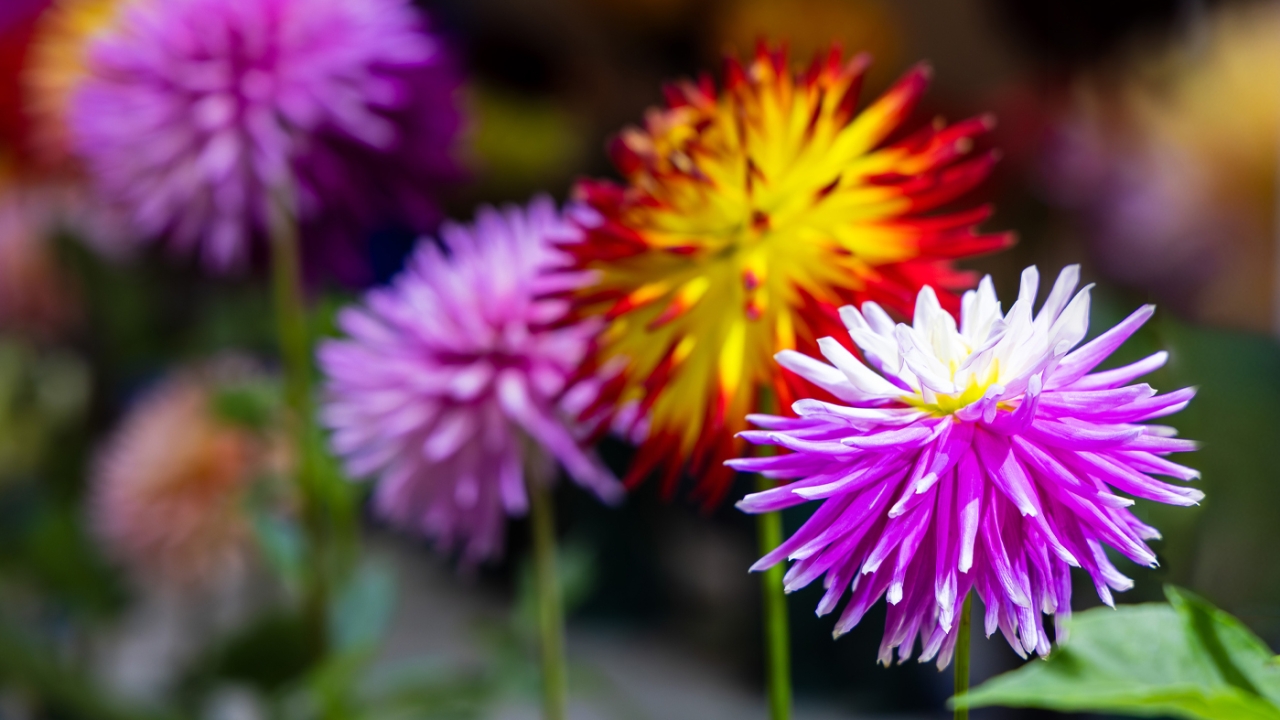

Smart Gardener
Perennials and Shrubs for Tough Spots
If every home garden had fertile soil, a gentle once-a-week rainfall and the right amount of sunlight and humidity, gardening would be a breeze.
But gardeners know that’s wishful thinking. Poor soils, dense shade, competing tree roots, and lack of rain make gardening a real challenge. When we choose suitable plants for difficult sites, the art of gardening suddenly becomes more successful and definitely more satisfying. Here are some ideas for demanding sites.
Clay Soil
Clay is made of minuscule particles that trap water around delicate plant roots, leaving little space for oxygen, which roots need. Wet clay soil is often heavy and sticky, but once it dries, it tends to crack and form a crust, making it difficult to cultivate. Without organic material, such as compost or shredded leaves, clay soil becomes compacted. Plants that thrive in clay tend to have soil-busting root systems that can handle the compaction. A few examples are baptisia, bee balm (Monarda), hosta, sedum, coneflowers and Joe-pye weed. Many shrubs including Diervilla, elderberry, potentilla, flowering quince and Rose of Sharon tolerate clay, but you can make the soil more plant-friendly by adding compost.
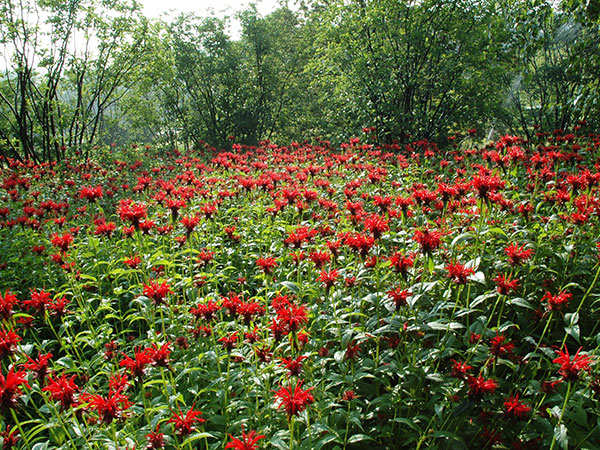
Bee balm
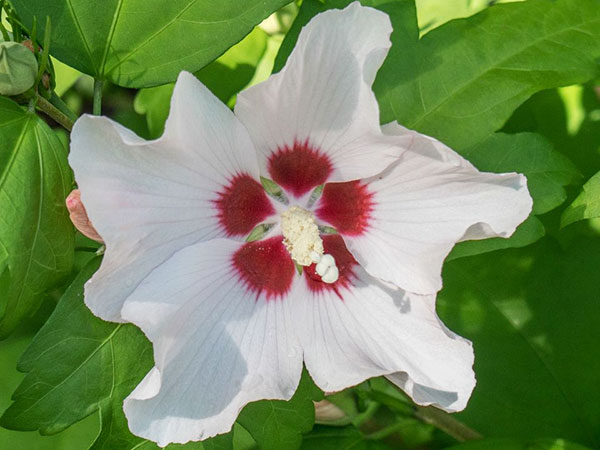
Rose of Sharon
Sunny and Dry
Prairie dropseed is a small native grass with a graceful arching habit and airy flowers. It prefers dry, well-drained soil and tolerates clay and occasional drought. This clump-forming grass grows 2 to 3 feet tall and blooms in midsummer. Some gardeners say the flowers smell like popcorn or cilantro. Pair it with purple coneflowers, perennial alliums, asters, or black-eyed Susans. A few shrubs for sunny, dry spots include Japanese yew, Savin juniper, panicle hydrangeas, boxwood, roses, and flowering quince.
Sunny and Moist
Swamp milkweed (Asclepias incarnata) is a native prairie plant that thrives in roadside ditches and in open spaces. In its native habitat, this milkweed grows in marshes, wet fields, and shorelines throughout Illinois. However, it readily performs in average garden soil, and if it’s moist, that’s even better. A bonus: it provides nectar for many beneficial insects and is a host plant for monarch butterflies. Pasture rose (Rosa carolina), Virginia sweetspire, black chokeberry, dwarf fothergilla, and bush cinquefoil are small shrubs (less than 5 feet tall) that also tolerate moist, sunny sites.
Gravel
Some garden designers are creating perennial borders that contain a substantial layer of gravel at the surface. For gardeners who have spent years amending the soil and applying mulch, growing in gravel seems counterintuitive. However, the gravel layer prevents weed seeds from germinating and provides exceptional drainage—desirable attributes when growing many native prairie plants or perennial herbs like lavender that need well-drained soil. In Illinois, gravel prairies occur on kames and eskers (mounds and ridges of gravel deposited by melting glaciers). Charming native plants found in gravel prairies include little bluestem, side-oats grama, pasque flower, prairie smoke, fringed puccoon, shooting-star, blazing-star, prairie dropseed, prairie cinquefoil, sky-blue aster, prairie gentian, purple coneflower, rattlesnake master, silky aster, and hoary vervain. Their deep roots reach well beyond the rocky layer into the soil below.

Panicle hydrangea
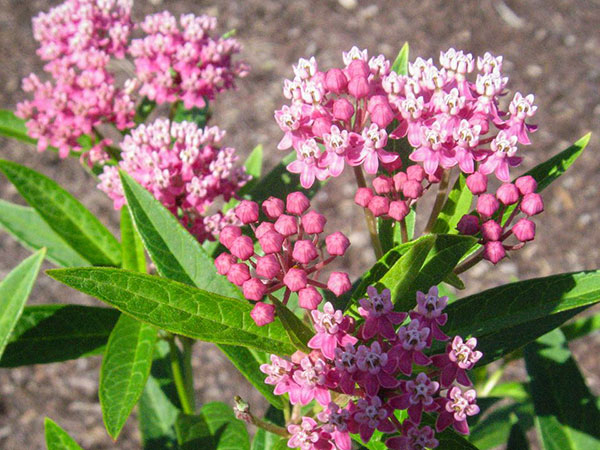
Swamp milkweed
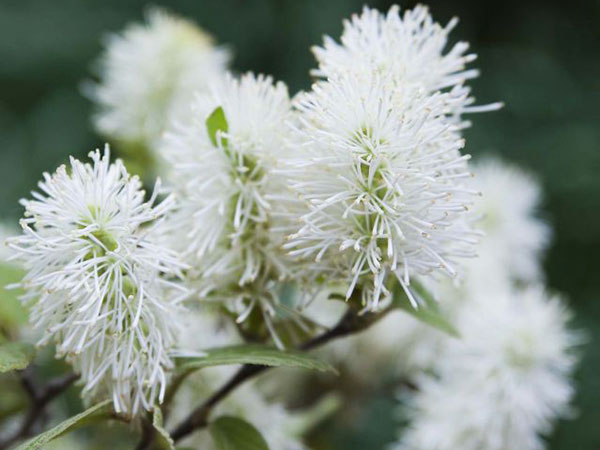
Dwarf fothergilla
Low Areas
A low spot in the garden can collect and hold water after a heavy rain. If the soil is primarily clay, it can take hours, if not days, for the water to drain away. Consider planting a rain garden in that area. The Chicago Botanic Garden's Rainwater Glen features native perennials with deep roots—marsh blazing star, spotted Joe-pye weed, great blue lobelia, and a variety of rushes and sedges, all of which tolerate rainfall fluctuations. And, the Garden has a rain garden how-to-manual just for you.
Moist Shade
Hostas are workhorses in the shade garden and will tolerate both dry and moist soils. Pair them with Japanese forest grass, Ligularia, iris and ferns, such as Japanese painted fern (Athryrium nipponicum)—all perennials that prefer shade and moisture. Bottlebrush buckeye (Aesculus parviflora) and buttonbush are attractive shrubs that thrive in moist soil and partial shade.
Dry Shade
One of the most difficult growing conditions is under tall shade trees. A healthy 100-foot-tall tree uses thousands of gallons of water, in a single growing season, so you’ll need plants that can adapt to dry, shady conditions. The tree’s root system is generally in the top two to three feet of soil and spreads far beyond the drip line—the edge of the outer leaves. It’s rather difficult to grow lawns under big trees and the result is usually sparse grass. A shallow layer of mulch from the trunk to the drip line is one solution, but gardeners like plants. Alternatives to lawn include shade-loving perennials such as hostas, sedges, hellebores, and barrenwort (Epimedium). When first planted, all of these perennials need adequate water during the growing season to establish healthy root systems. Consider adding some spring-blooming native wildflowers, such as Canadian ginger, bloodroot, bleeding heart, and columbine, as well as smaller daffodils like February Gold.
Rodents
Is there such a thing as plants that repel mice, chipmunks, squirrels, or rats? Well, we’d like to think so, but most of the information is anecdotal. Some gardeners plant strong-smelling herbs, such as lavender, thyme, and basil in the hopes that their fragrance will discourage rodents from digging holes and tunnels. There’s no proof that works, however. On the plus side, the herb flowers will attract beneficial pollinators. You can discourage chipmunks from tunneling by soaking a small piece of cloth in ammonia and placing it in the entry hole. To prevent them from digging in plant pots, place a layer of smooth pebbles on top of the potting mix. And, remove fallen birdseed to avoid attracting (and feeding) these four-legged critters.
Discover More
Weather-tolerant Gardens
The Dirt on Soil
Shade Gardening with Colorful Foliage
Nina Koziol is a garden writer and horticulturist who lives and gardens in Palos Park, Illinois. Photos by Ellen Hodges.

